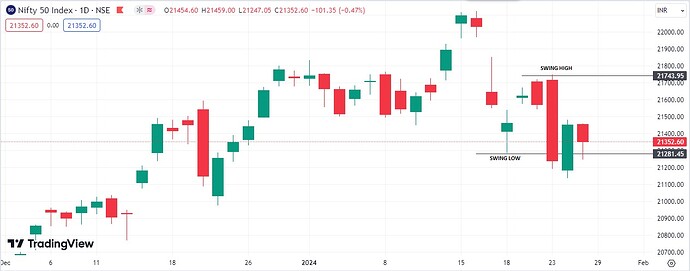Nifty fell 1.96% during the January series expiry. Nifty futures rollover stood at 81.28%, which is higher compared to last month’s expiry rollover of 79.54% and its three/six/nine months average of 78.13%,78.60% & 78.20% respectively. Rollover is a process of carry forwarding an existing position from one month to another month. A high rollover indicates a strong sentiment while a lower rollover is usually considered as a sign of weak sentiment.
Nifty will start the February series with an open interest of 1.28 crore shares compared to an OI of 1.38 crore shares at the beginning of the January series. Nifty saw a higher rollover with a higher cost of carry (+0.74%) and a fall in open interest, compared to its previous month, indicating unwinding or liquidation of long positions in January series.
INDIAVIX, known as the fear indicator, started with 15.14 and made a low of 11.78 on 15th January as the volatility cooled off, giving major comfort to the bulls. During the period, Nifty rose and made an all-time high of 22,124 on 16th January. The volatility started to rise again and Nifty came under massive selling pressure since then, falling 3.48% from the highs to close at 21,353 on the last day of the January series. The India VIX settled at 13.86 on 25th January, 2024.
The Foreign Portfolio Investors (FPIs) Long Short ratio stood at 69.52% on the first day of January series. The FPIs held relatively higher long positions compared to short positions in Index futures. Despite the price making fresh highs, the FPIs activity in Index futures remained subdued until 16th January, 2024. When FPIs started to liquidate long positions, the tremors were felt in the markets. The Long-Short ratio went below the 50% mark and stood at 22.00% on the last day of January series as the FPIs aggressively built short positions and liquidated existing long positions since 17th January. They now hold more short positions relative to long positions in Index futures.
The Put-Call Ratio (PCR), a sentiment indicator, started with 1.54 on the first day of January series and fell until 0.66 on the last day of January series. The reading of 1.54 suggested that the market is overbought and a healthy correction can’t be ruled out. The PCR fell below 1 on 17th January for the first time since 22nd November, 2023 as the call writers (bears) outplayed the put writers throughout the January series.
On the Options front in the February monthly expiry, the 21,000 Strike put option has highest open interest with 29,08,000 contracts followed by the 20,000 Strike put option with 21,33,800 contracts. The Strike prices with maximum put open interest are the support levels. While on the call side, the 23,000 call has highest open interest with 30,99,600 contracts followed by the 22,000 Call strike with 18,28,150 contracts. The Strike prices with maximum call open interest are the resistance levels.
Nifty consolidated in a tight range of 21,500-21,800 levels for the first ten trading sessions of January series until 11th January. The price broke out of the range on 12th January and made an all-time high of 22,124 on 16th January. The price cracked 3.80% since then and closed at 21,353 on the last day of January series. The level of 21,285, which is also the immediate previous swing low (made on 18th January) is crucial. A strong close below the 21,185 level can take the Index further down towards 20,800 levels. A bearish engulfing candle was formed on the weekly chart last week with price closing lower again this week, confirms the bearish sentiment. The interim budget will be announced by our honourable finance minister, Nirmala Sitharaman on 1st February at 11 AM and the market is expected to be extremely volatile in the upcoming week.
Having said that, the current market scenario reveals a low Put-Call ratio (PCR) at 0.66 and a Foreign Portfolio Investors (FPIs) Long-Short Ratio of 22%, suggesting a pronounced bearish sentiment in the January series. Historical trends indicate that whenever the PCR hovers around 0.5-0.6 and the long-short ratio is in the range of 10-15%, the market typically experiences a short-term rebound. Consequently, there is a considerable likelihood that the February series may witness a market recovery, dispelling the prevailing bearish sentiment and initiating an upward trend.
If the Index can hold on to the 21,285 levels, short covering (sellers booking profits) at 21,500 Strike can push the Nifty higher. A strong close above 21,750 level can result in resumption of uptrend in Nifty.
